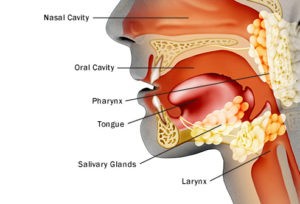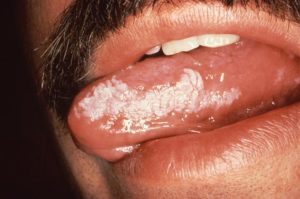“Dysplasia is the step preceding the formation of squamous cell carcinoma in lesions which have the potential to undergo dysplasia.”
Dear Cancer Coach-I was diagnosed with dysplasia of the tongue a few weeks ago. It was surgically removed, but I know from research relapse and cancer progression are common with these types of lesions.
I am hoping to lessen my chances with green tea extract and curcumin. I wondered about your opinion on taking them orally (swallowing) or opening up the liquid capsules and adding them to coconut oil as more of a mouthwash.
Thoughts? I can’t find studies where both were used for oral cancer, but I can’t tell how they were applied and I wondered if you had run across this. Thanks!
Dear Dysplasia of the Tongue-
There are millions of people around the world who suffer from PRE-CANCERs such as
- Actinic Keratosis,
- GERD,
- DCIS,
- early PCa,
- colon polyps
and more.
You are correct. Dysplasia of the Tongue is pre-cancer, not full cancer. And you are wise to treat it with inexpensive but evidence-based therapies shown to reduce your risk of head and neck cancer.

The degree of dysplasia (severe, mild, etc.) will make a difference as to your risk of developing frank cancer but 1) dysplasia is pre-cancer, not cancer (which is good) but you are smart to take relatively cheap/easy steps to reduce your risk of cancer.
To answer your question, yes, oral (capsule) green tea extract and curcumin have been shown to reduce the risk of head and neck cancer. Oral cancers is not as well studied as head and neck cancer is. You are correct, curcumin is notoriously difficult for the body to absorb. There are several curcumin formulas that are much more “bioavailable” aka absorbed into the blood.
I will link a blog post below that gives the names, links to amazon, etc. Scroll down the page…As for the dose for each, I will tell you what I do. Many/most of the studies simply say “a time and dose dependant manner.” Meaning the more and longer, the more effective.
I take one capsule of curcumin (400 mg) and one capsule of green tea extract (750 mg) daily. Not a lot. If you are like me, you are in this for the long haul (the rest of our lives…). My supplements have become a daily routine for me.
The Most BioAvailable Curcumin Formulas
The bioavailable/absorbable issue with curcumin used to be a major problem with this nutritional supplement. Now that there are a number of enhanced curcumin formulas, there is much less of an issue. Meaning, it is easier to ingest a therapeutic dose in the body with a capsule. To be honest, I am lazy when it comes to nutritional supplementation. I supplement with many different types of supplements for different reasons so I don’t want to worry about bioavailability- yes, before, after food. But not beyond that.
Let me know if you have any other questions.
David Emerson
- Cancer Survivor
- Cancer Coach
- Director PeopleBeatingCancer
Recommended Reading:
“Among oral lesions, we encounter a series of malignant epithelial lesions that go through clinical and histopathologic processes in order to be diagnosed. Identifying these processes along with the etiology knowledge of these lesions is very important in prevention and early treatments. Dysplasia is the step preceding the formation of squamous cell carcinoma in lesions which have the potential to undergo dysplasia. Identification of etiological factors, clinical and histopathologic methods has been the topic of many articles. This article, reviews various articles presenting oral cavity dysplasia, new clinical methods of identifying lesions, and the immunohistochemical research which proposes various markers for providing more precise identification of such lesions…
Malignant Transformation Potential; refers to occurrence of malignancy or precancerous either in primary or final stage. Dysplastic changes are one of the sings of premalignant lesions which can be observed in histopathologic view especially in epithelial. Although recent development in medical science8–10recommend conservative methods, additional research is required for further evaluation. The dysplastic epithelial lesions have the clinical characteristics of a premalignant lesion similar to carcinoma. Recognition of such change is vital in preventing carcinoma changes.10

Premalignant lesions such as
- leukoplakia,
- erythroplacia,
- smokeless tobacco keratosis,
- oral sub mucosal fibrosis,
- Lichen Planus,
- Condylom Acominatum,
- Inverted Schneiderian Papilloma Actinic Keratosis
are briefly discussed below.7,10,11..
The chances of malignancy in mild or moderate dysplastic lesions are 4 to 11% and 2 to 35% for severe dysplastic changes. Also it has been surveyed that a premalignant lesion takes approximately up to 3 years to turn into an oral cancer. Several studies evaluated the possibility and capability of malignancy changes but could not be identified nor proved with certainty.43–46 Defining the impact of molecular factors would be helpful in determining and discovering therapeutic methods..
A study by Silverman concluded that 36% of leukoplakia ends with malignancy. 7-50% of sever dysplastic lesions, 3-30% moderate dysplastic lesions and lesser than 5% of mild dysplastic lesions are capable of turning into malignancies.52–55 Many pathologists believe that dysplastic changes are temporary as an incipient stage of turning to malignancy and a mild dysplasia might lead to sever dysplasia.56..
Conclusion- All investigators generally accept the fact that most carcinoma cases in oral cavity, display considerable change before reaching such state. Thus, dysplastic lesions with microscopic characteristic features have a high risk potential for transformation to malignancy. Therefore, appropriate diagnostic procedures (i.e. biopsy) for every suspicious dysplastic lesions in oral cavity should be considered.”
“Background: Oral lichen planus (OLP) is a chronic inflammatory condition of the oral mucosa. Multiple studies have shown that approximately 1% of patients with OLP will develop oral squamous cell carcinoma (OSCC), however, no study has taken a population-based multicenter approach to demonstrate this association. Our main objective was to determine the incidence of OSCC in OLP in a specific population and secondarily to assist physicians regarding appropriate long-term monitoring of patients with OLP…
Conclusions: Patients with OLP, particularly the erosive type, have an increased incidence of OSCC development and should be monitored closely…”




